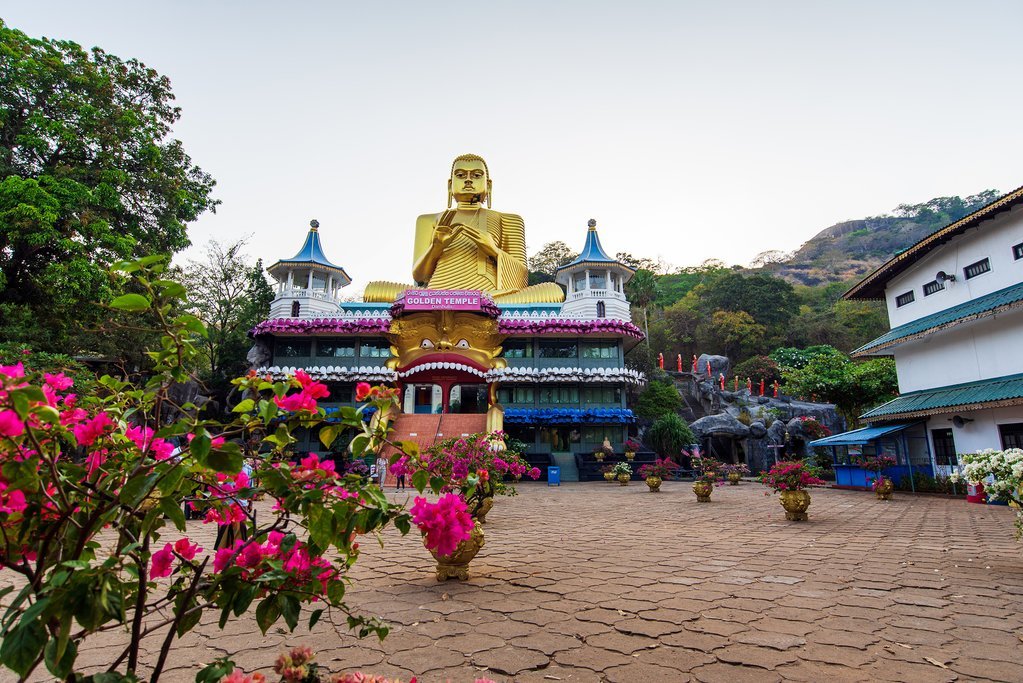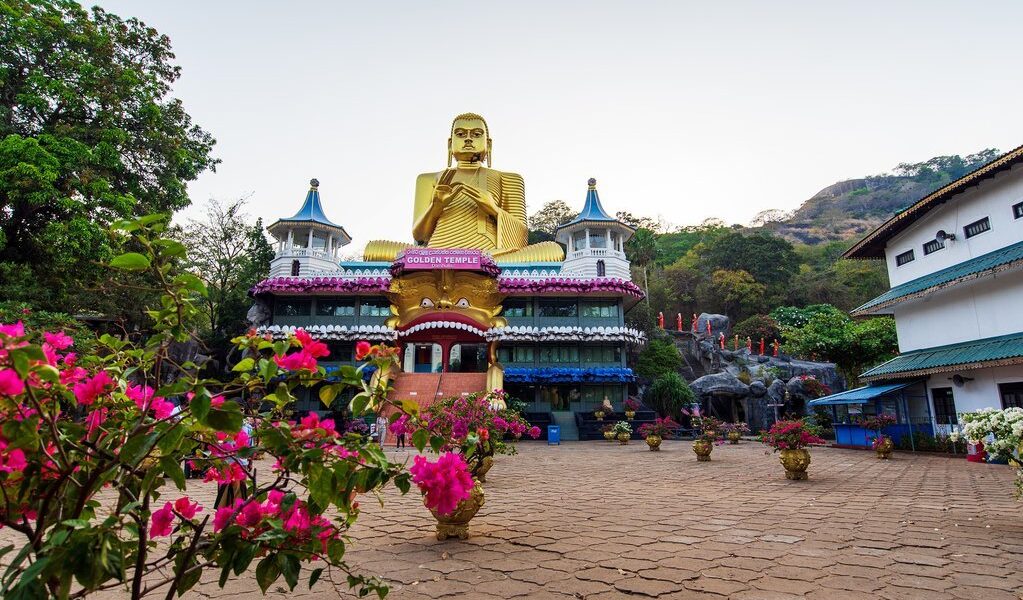
March is the last month for excellent beach weather in the southwest of the island, and the peak tourist season is winding down at this time along with the sunny skies. The Cultural Triangle is dry, and the north and east don’t receive too much rain this month, making it a great time to visit.
Weather Conditions in Sri Lanka During March
As March arrives, the Northeastern monsoon begins its gradual retreat, paving the way for the most agreeable weather conditions to grace the northeastern regions of Sri Lanka in the subsequent months. Simultaneously, in the southwestern parts of the island, Colombo, along with the nation’s most sought-after and developed beaches, continues to bask in dry and sunny weather. This confluence of favorable weather patterns across different regions makes March a particularly popular and appealing time for tourists and travelers to plan their visit to Sri Lanka. It is crucial to remember, however, that despite this period being considered the dry season, the island’s tropical climate is known for its unpredictable nature, and sporadic rainfall can still occur. Conversely, even during what is typically considered the wet season, clear and sunny days can surprise visitors.
Temperatures across Sri Lanka tend to remain remarkably consistent throughout the entire year, offering a relatively stable climate for travelers regardless of the month. In March, specifically, Colombo typically experiences daytime high temperatures hovering around 90°F, while the nighttime lows average around 77°F. Moving inland to the city of Kandy, the average high temperatures also reach approximately 90°F, but the nighttime lows tend to be a bit cooler, settling around 68°F. For those seeking a respite from the heat, the cooler hill station of Nuwara Eliya provides a refreshing alternative, with average high temperatures reaching 72°F and lows dipping to a chilly 52°F. Meanwhile, on the northeastern coast, the city of Trincomalee experiences highs of about 88°F in March, with lows around 77°F, maintaining the warm tropical feel of the coastal areas.
The renowned Cultural Triangle region, encompassing the historically significant sites of Anuradhapura, Sigiriya, Polonnaruwa, and Dambulla, experiences its lowest humidity levels of the year during this period, averaging around 60%. This relative dryness can make exploring the ancient ruins and cultural landmarks more comfortable. In Dambulla, average high temperatures during the day reach approximately 93°F, with lows settling around 72°F at night.
Crowd Levels and Travel Costs in March
The pleasant weather conditions prevalent in March contribute to its classification as part of the high season for tourism in Sri Lanka. However, it’s important to note that the absolute peak of tourist activity is beginning to subside, with the shoulder season just around the corner in the following month. As many travelers conclude their vacations and return to their regular work and school schedules, the crowds may thin out slightly. Nonetheless, March remains a popular time to visit, and it is highly advisable to make travel arrangements and secure accommodations well in advance to ensure a smooth and enjoyable trip. Booking flights, hotels, and tours ahead of time is a recommended strategy.
Recommended Destinations for March Travel
March presents an excellent opportunity to bask in the sunshine and enjoy the beautiful beaches of southwestern Sri Lanka. The beaches located near Negombo are among the most frequented and beloved on the entire island, which means they are likely to be bustling with visitors during this time. Venturing further south along the coast, Unawatuna Beach is another popular choice, drawing many tourists due to its proximity to the historic city of Galle. For those seeking a more secluded and tranquil beach experience, Talalla Beach and Mirissa Beach offer quieter alternatives with fewer crowds. These beaches are ideal for relaxation and enjoying the natural beauty of the coastline.
In addition to the beaches, March is also a favorable time to explore the historical and cultural attractions within the Cultural Triangle. The most renowned and visited sites are undoubtedly those located in Sigiriya and Polonnaruwa, drawing large numbers of tourists. Anuradhapura and Dambulla, while equally fascinating, tend to be slightly less crowded, providing a more relaxed experience for visitors. Beyond the main attractions, the area also boasts some lesser-known, off-the-beaten-path destinations, such as the intriguing Nagalakanda Ruins, which offer a glimpse into the region’s rich history and provide an opportunity for exploration away from the typical tourist crowds.
Chat with a local specialist who can help organize your trip.
Activities and Experiences in Sri Lanka in March
March falls within the designated season for climbing Adam’s Peak, presenting an incredible opportunity for travelers venturing into Sri Lanka’s Central Highlands to incorporate this challenging yet rewarding overnight adventure into their travel itinerary. Adam’s Peak, also revered as Sri Pada, stands tall at an impressive 7350 feet and is nestled within the protected boundaries of Sri Lanka’s Peak Wilderness Sanctuary, conveniently located not far from the renowned Horton Plains National Park. Beyond its natural splendor and hiking appeal, Adam’s Peak holds immense religious significance as a prominent pilgrimage site, especially for Buddhists. At the summit, a distinctive footprint mark is believed by Buddhists to belong to the Buddha himself. Similarly, Tamil Hindus attribute it to Lord Shiva, while certain Sri Lankan Muslims and Christians believe it to be the footprint of the biblical Adam. During the pilgrimage season, countless devotees undertake the arduous climb overnight, eager to witness the breathtaking sunrise from the mountain’s peak.
The Cultural Triangle offers a plethora of captivating sights and experiences to explore. Sigiriya is globally recognized for its iconic and visually stunning ancient rock fortress, drawing countless travelers who seek to marvel at its historical significance and architectural brilliance. In Polonnaruwa and Anuradhapura, visitors can immerse themselves in the sprawling remains of ancient cities, with many opting to rent bicycles as a convenient mode of transportation to navigate the extensive complexes of ruins. The nearby town of Dambulla is highly esteemed for its intricately painted cave temples, showcasing remarkable artistry and religious heritage. When visiting Polonnaruwa or Anuradhapura, it is advisable to conclude your sightseeing endeavors before nightfall, as street lighting is limited within the ancient cities, ensuring a safer and more enjoyable experience.
Festivals and Holidays During March
March in Sri Lanka is often punctuated by several significant festivals and holidays, adding cultural richness to the travel experience.
The Hindu festival of Maha Shivratri frequently occurs in March, although the exact dates can vary depending on the lunisolar calendar. This important festival is observed with an all-night vigil dedicated to Lord Shiva. Devotional rituals and ceremonies are performed in Shiva temples across Sri Lanka, with many of these temples concentrated in the northern and eastern regions of the island, where the Hindu Tamil population constitutes a significant portion of the community.
Buddhist Poya days, which are observed on the full moon day of each month in Sri Lanka, also occur in March. March’s Poya is known as the Medin Poya, and it holds special significance as it commemorates the Buddha’s inaugural visit to his father’s kingdom following his enlightenment, marking a pivotal moment in Buddhist history.
Suggested Itineraries for Sri Lanka in March
Explore Sri Lanka’s historic sites, observe diverse wildlife, and unwind on beautiful golden-sand beaches with this comprehensive two-week itinerary.
Embark on a journey that encompasses the highlights of the Cultural Triangle, trek through lush rainforests, and discover the historical charm of Galle Fort.
Additional Information to Enhance Your Trip
B-2520

